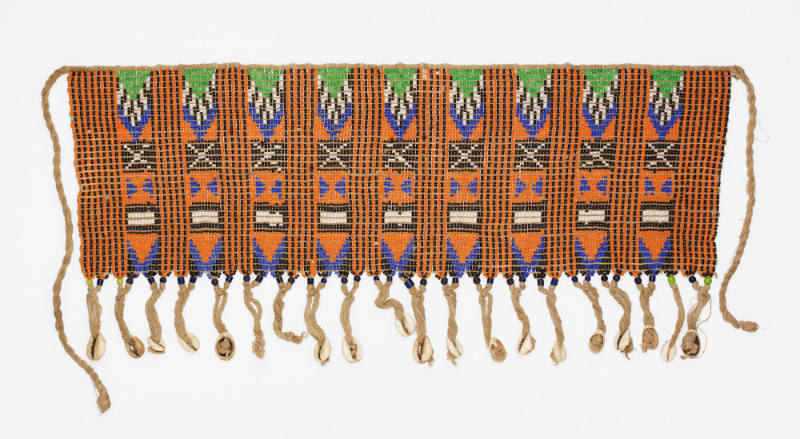
In the wing gallery, Floor 2L
Combining works of art from Africa, Asia, Europe and the Americas, Powering Exchange explores how art across cultures may confer power and prestige, facilitate trade and exchange, or effect bodily, social, or spiritual transformation.
Powering Exchange draws together key artworks that have supported teaching at Cornell and enriched learning among local and regional pre-K–12 school groups. The observations and experiences shared by these audiences over decades of their engagement with the Museum have shown the Johnson’s educators which works of art have a particular ability to provoke complex and engaging conversations, while connecting fluidly to pre-K–12 and university curricula. In the Johnson’s ongoing process of envisioning how best to support collections-based teaching and learning, this installation has also served as an opportunity to gather expert feedback from local educators throughout Tompkins County, whose diverse perspectives informed the display strategies, object selections, and thematic groupings. The works of art in Powering Exchange have been observed, discussed, and vetted by audiences ranging from curators to kindergartners.
In an effort to move away from educational displays that separate works of art based on their geographic origin, this exhibition draws artworks together under three themes: power, exchange, and transformation. These themes create opportunities for teaching about cultural difference while emphasizing forces across space and time that have motivated people, shaped societies, and inspired works of art. They provoke questions about the values of people who create and engage with these objects: How can a netsuke sculpture so tiny it fits in the palm of one’s hand make a statement about its owner’s status? What visual details give the subjects of Old Master portraits their power, and what does Kehinde Wiley accomplish by using elements of that same visual language? How do the sturdy treelike arms of a Tuareg bag trestle support a society built to move, and why is that bag trestle on display next to a ceramic teapot with a spout built like a branch? Can a static object transform itself—or even a person!—in front of our eyes? Powering Exchange responds to these questions and more, juxtaposing artworks from different times, places, and artistic traditions in order to spark novel understandings of these themes—and of the artworks themselves.
This exhibition was curated by Andrea Murray, Lead Educator and Pre-K–12 Curriculum Development Specialist, with the Johnson Museum’s Education Department.
Selected Artworks

Seeker
Hank Willis Thomas, Sanford Biggers

Human-jaguar figure
Veracruz, Mexico

Blue Ish
Mary Bauermeister

Raven Inside of the Whale
Freda Diesing

Rainbow 10
Billy Apple

Horse Sense
Jaune Quick-to-See Smith

Woman’s apron
Kirdi (Cameroon)

Jaguar effigy pin or stopper
Manteno (Mantena)

Reclining figure with feline mask
La Tolita (Ecuador)

Jaguar effigy jar
Guanacaste-Nicoya (Costa Rica)

Cushion (èsteg)
Tuareg

The Exquisite Pirate (Jane) #13
Sally Smart

Double-Spout Branch T-Pot
Ah Leon

Pressed Iron Blossom No. 1
Willie Cole

Deer Three Heads
Ji Yong-Ho

Passing/Posing Untitled 1
Kehinde Wiley

Portrait of Louis XIV
Robert Nanteuil

Ball game yoke
Veracruz, Mexico

Sisiutl and Thunderbird mask
Randy Stiglitz

Crescentia
Rosemary Mayer

Claire de Lune Vase
Louis Comfort Tiffany











